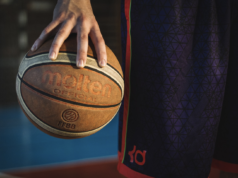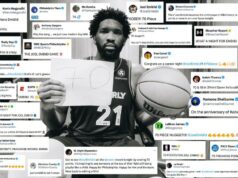Coach Gregg Popovich recently said the following about the struggling Richard Jefferson:
“If we can get him in transition more often, I think it would help loosen him up and take advantage of his capabilities.”
That made me wonder if speeding the game up in general would help the struggling Spurs. In the past, the Spurs have traditionally been one of the slower teams in the NBA, although they have shown the ability in the past to play effectively at a faster pace, mostly against the Suns.
To investigate this idea closer I decided to examine the correlation between the Spurs possessions and the following: efficiency, effective field goal percentage (eFG%), turnover rate (TO%), free throw rate (FTR), and offensive rebound rate (ORB%). I chose efficiency because it gives an overall examination of how well the team performed in an individual game. I chose the other four because they are the “Four Factors of Winning”, which are considered the most important statistics.
I used the website statsheet.com to look at the Spurs individual games and find each statistic. Then I placed them in an Excel spreadsheet, allowing me to quickly make charts for each correlation and find the correlation coefficient. If you would like to read more on correlation coefficients I would recommend checking out this easy to read site. For those of you that don’t want to look through the numbers yourself, below I’ve included the chart I made. The opponents are listed in the order of games played.
| Opponent | Poss | Eff | eFG% | TO% | FTR | ORB% | W/L |
| NOH | 93 | 121.5 | 57.5% | 10.7% | 23.2% | 28.2% | W |
| CHI | 92 | 92.4 | 44.8% | 14.1% | 29.4% | 17.7% | L |
| SAC | 94 | 120.2 | 63.5% | 18% | 32.4% | 23.3% | W |
| UTAH | 91 | 108.8 | 46.9% | 12% | 38.2% | 37.2% | L |
| POR | 90 | 93.3 | 40.5% | 10% | 32.9% | 19.5% | L |
| TOR | 96 | 136.5 | 56.3% | 6.2% | 50.5% | 40% | W |
| DAL | 91 | 101.1 | 51.2% | 14.2% | 23.7% | 21.7% | W |
| OKC | 97 | 101 | 48.7% | 15.4% | 31.6% | 21% | L |
| DAL | 98 | 95.9 | 48% | 18.3% | 30.7% | 20% | L |
| UTAH | 87 | 95.4 | 45.3% | 12.6% | 30.6% | 27% | L |
| WASH | 95 | 111.6 | 52.3% | 8.4% | 24.4% | 26.6% | W |
| MIL | 91 | 123.1 | 57.6% | 17.5% | 33.3% | 39.3% | W |
| GSW | 107 | 110.3 | 54.7% | 13% | 37.6% | 22.2% |
W |
| HOU | 93 | 98.9 | 46.4% | 15% | 47.8% | 21.6% | W |
| PHIL | 91 | 106.6 | 55.2% | 18.6% | 21% | 38.8% | W |
| BOS | 95 | 87.4 | 43.1% | 18.9% | 19.3% | 40% | L |
| DEN | 98 | 101 | 52.1% | 19.3% | 44.2% | 15.6% | L |
| UTAH | 91 | 111 | 55% | 16.4% | 44.2% | 23.2% | L |
| SAC | 101 | 116.8 | 60% | 12.8% | 25.8% | 19.4% | W |
| CHA | 98 | 106.1 | 66.6% | 28.5% | 36.3% | 32% | W |
| LAC | 92 | 125 | 64.6% | 14.1% | 34.6% | 25% | W |
| PHX | 96 | 108.3 | 50.5% | 12.5% | 23.2% | 27.9% | L |
| AVG | 94.4 | 107.8 | 52.8% | 14.8% | 32.5% | 26.7% |
In making this chart I noticed that there did not seem to be a strong correlation between the number of possessions in a game and the five different factors I wanted to explore. To be sure of this I calculated the correlation coefficiencies for each relationship. This would tell us the linear relationship between the two variables. A correlation coefficient will fall between 1 and -1, with 1 being an absolutely positive relationship and -1 being an absolutely negative relationship. A coefficient of 0 means no relationship at all.
| Corr. B/E Poss & Eff | 0.1208 |
| Corr. B/E Poss & eFG% | 0.2742 |
| Corr. B/E Poss & TO% | 0.1265 |
| Corr. B/E Poss & FTR | 0.1021 |
| Corr. B/E Poss & ORB% | -0.2272 |
As you can see, none of the correlation coefficients were very strong. The strongest linear relationship was between possessions and effective field goal percentage. Even then the coefficient of .2742 is fairly weak. The only correlation that intrigued me at first was that between possessions and offensive rebound rate, which had a weak negative correlation. After giving it some thought this makes sense. Shots are occuring at a faster rate when the number of possessions increase, meaning that a team is less likely to have players in strong rebounding positions.
With none of the “Four Factors of Winning” correlating strongly with the number of possessions, I think it is fair to say that the Spurs do not need to explore speeding up their game. While it might be appropriate with certain lineups, such as one with Parker, Ginobili and Jefferson in it, to play at a quicker pace to utilize athleticism and quickness, the Spurs should focus in changing different aspects of their game. I suggest limiting turnovers and playing with some heart.
Do you think the Spurs should play at a faster pace? What changes do you think the Spurs should make to get them on the winning track? Feel free to leave your suggestions in the comments.





